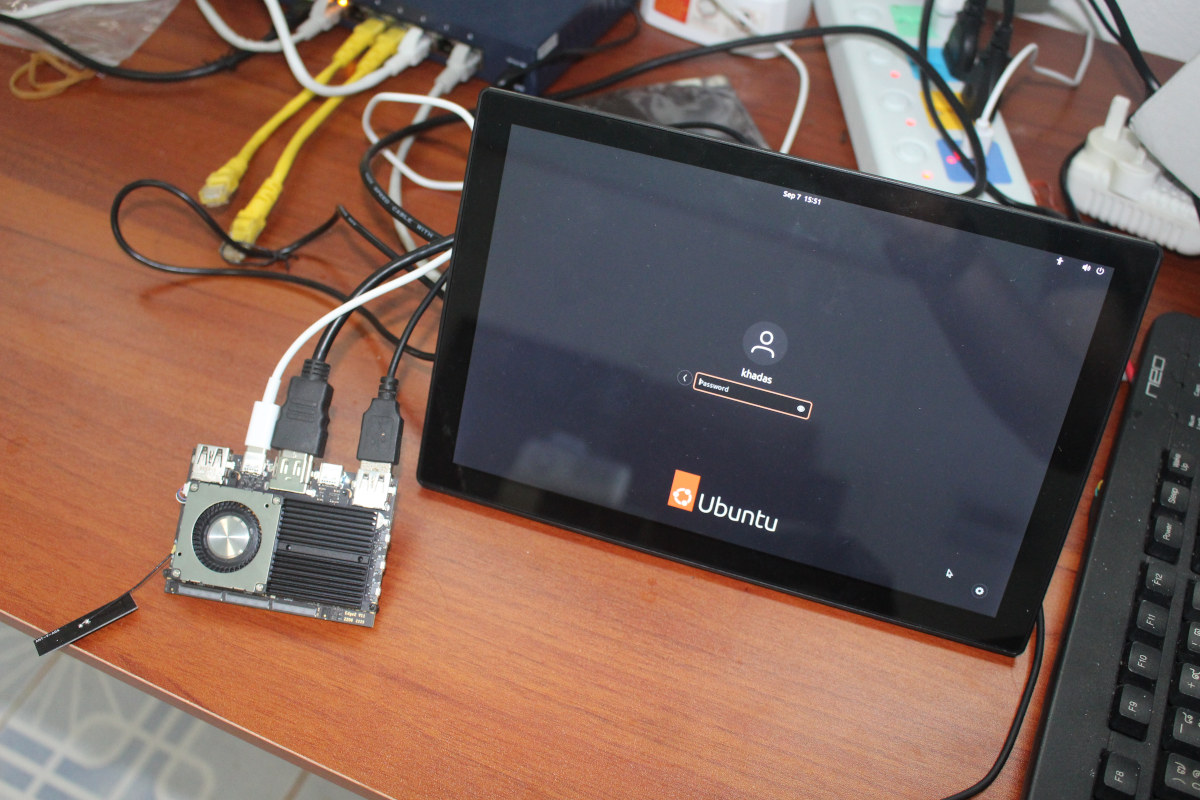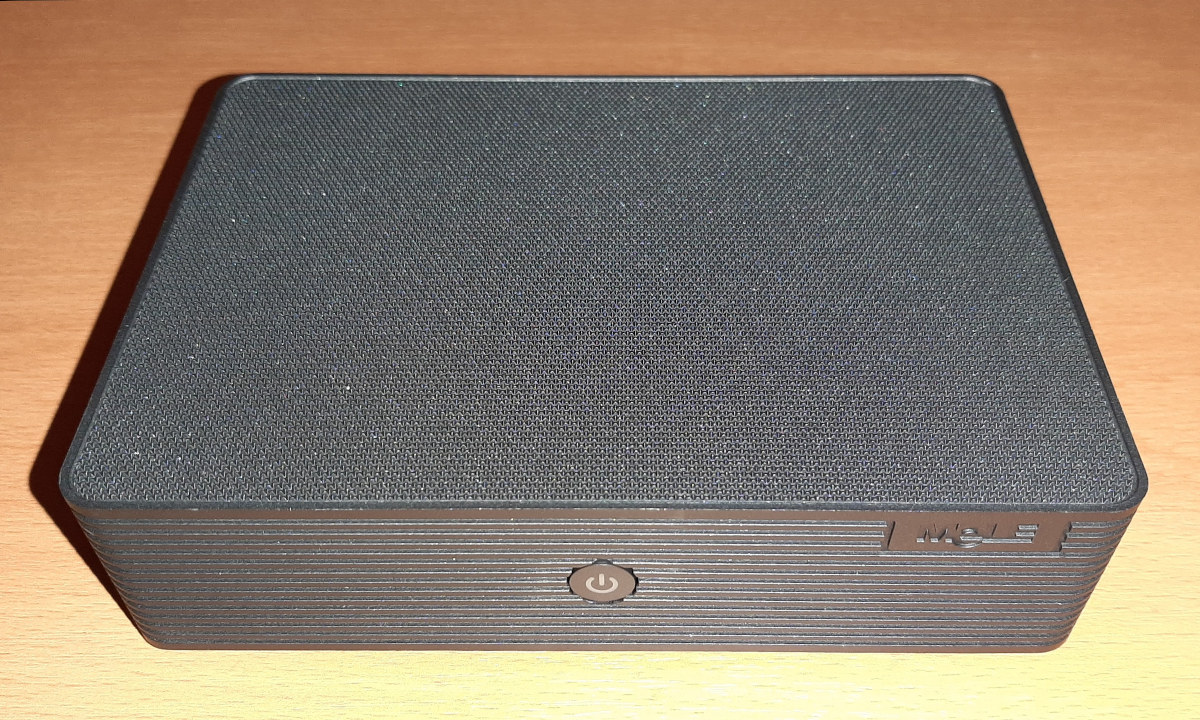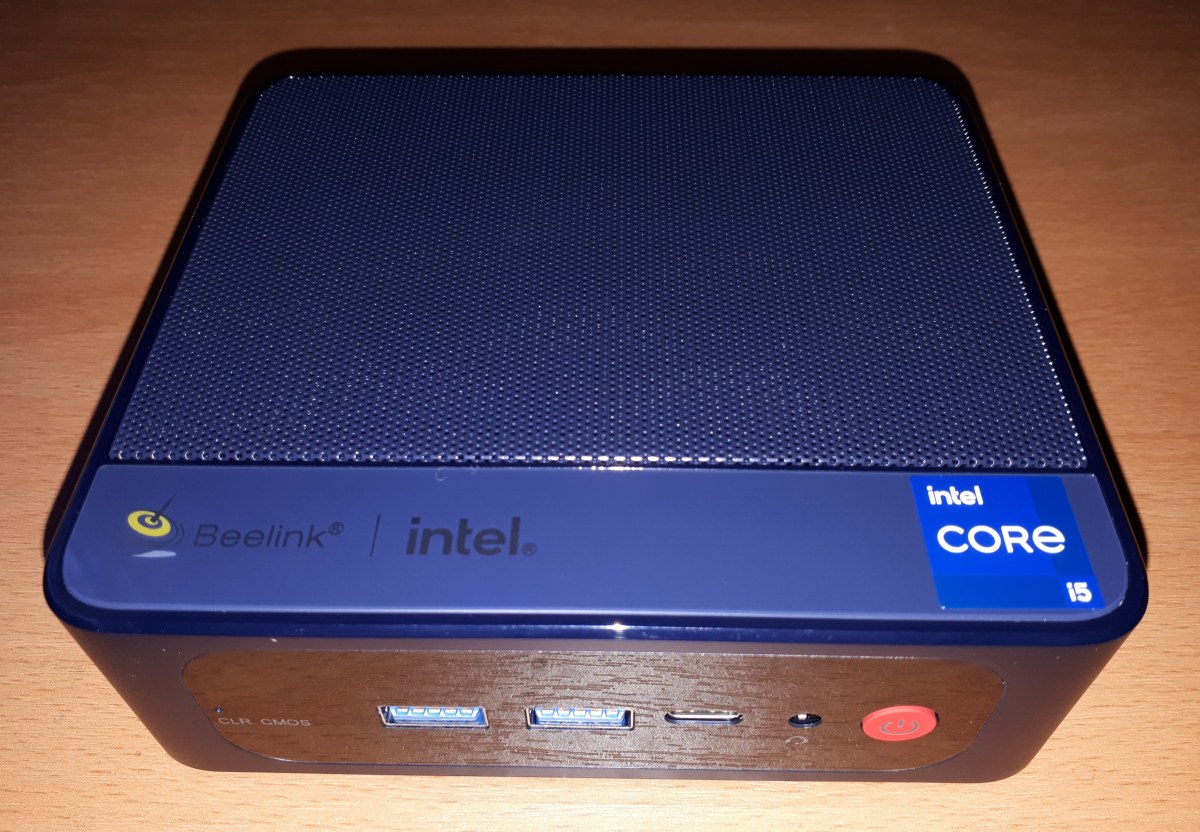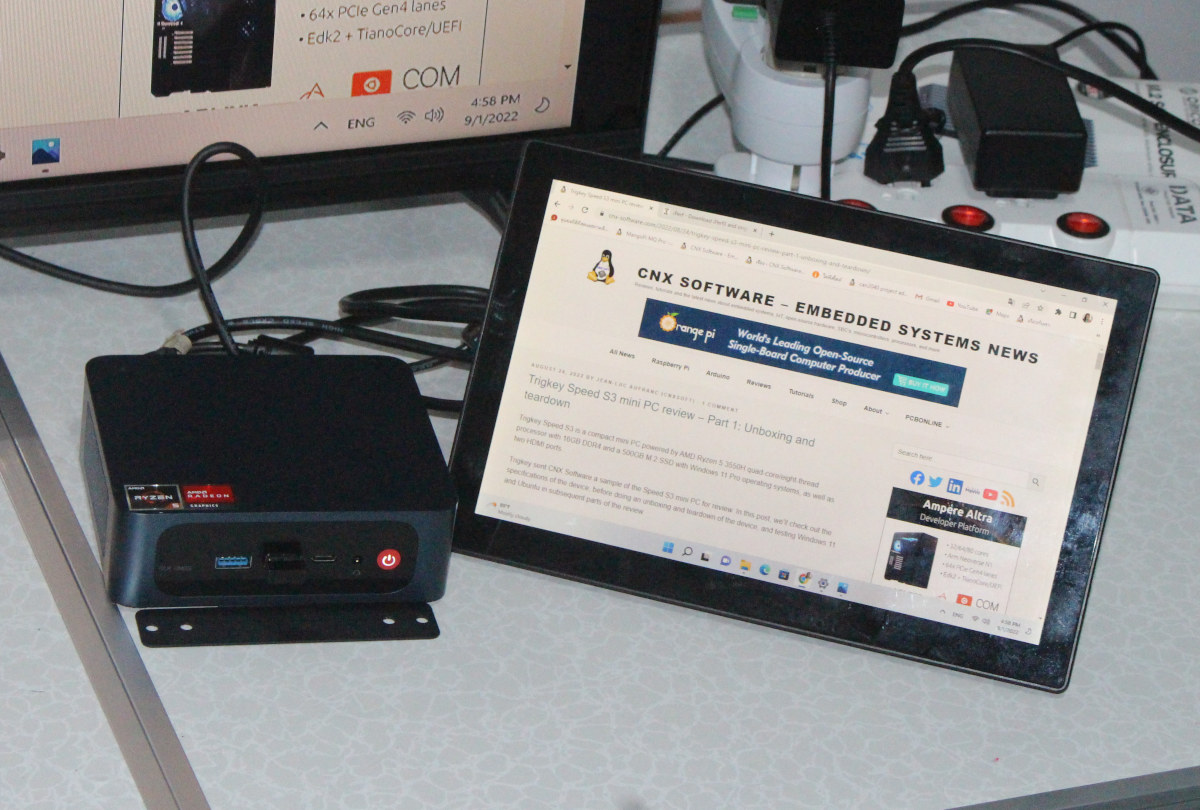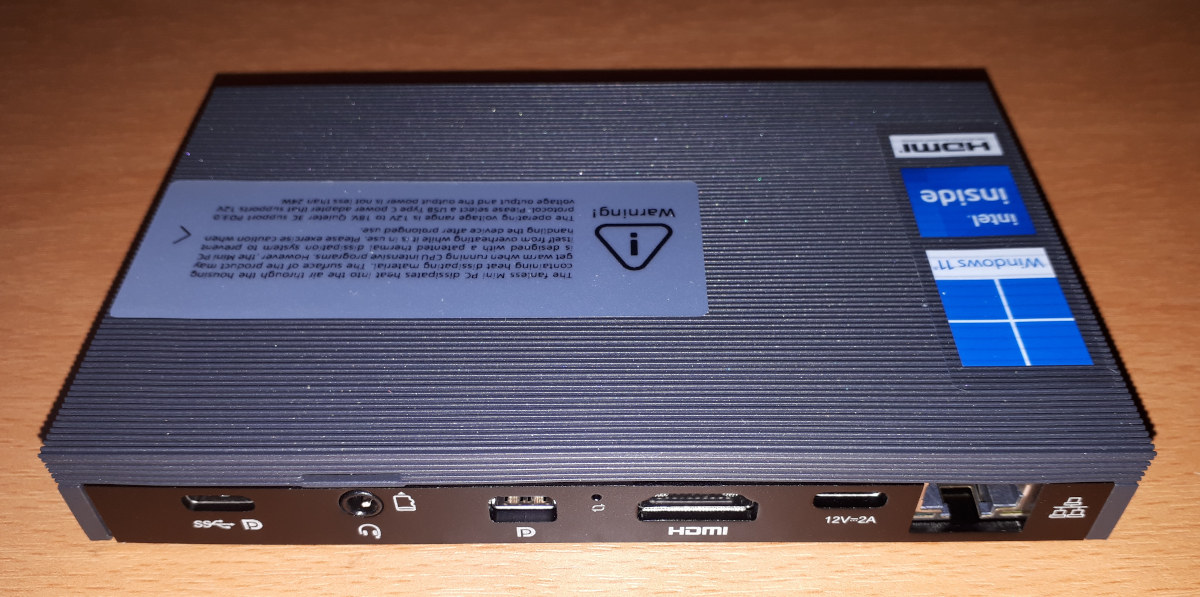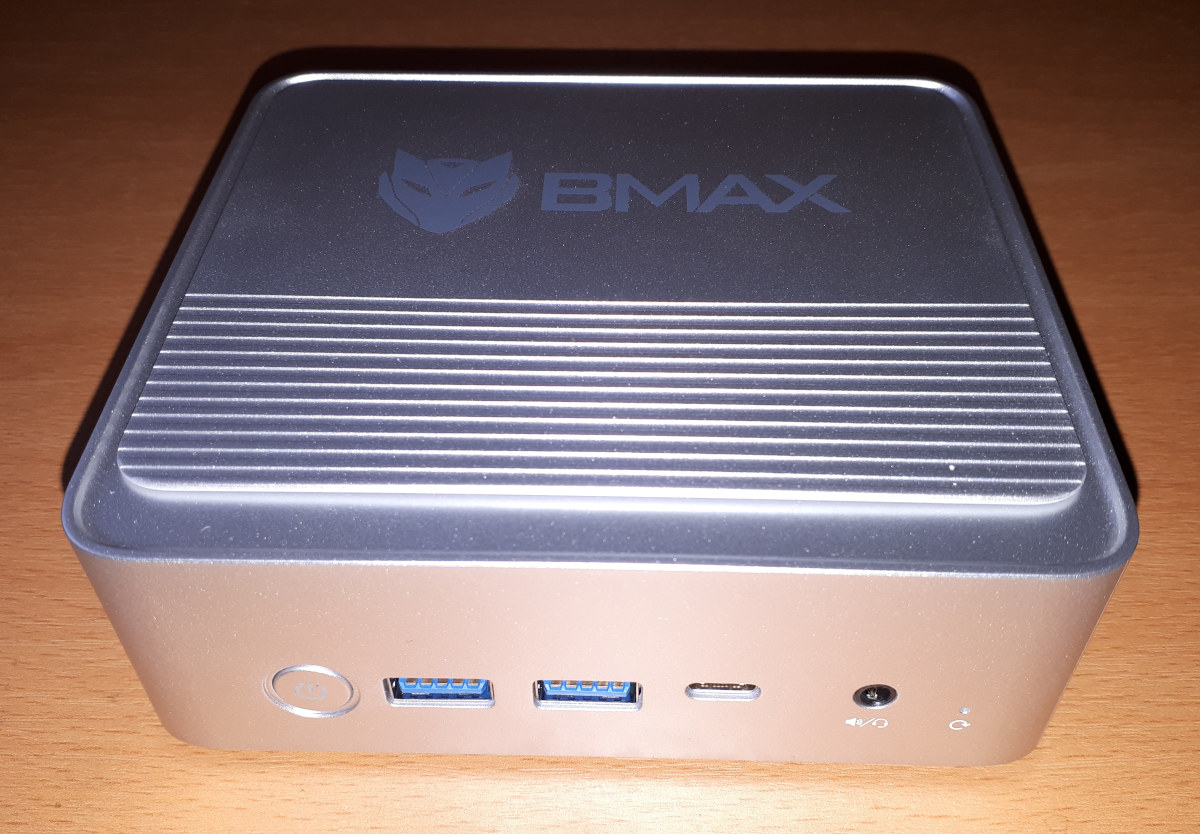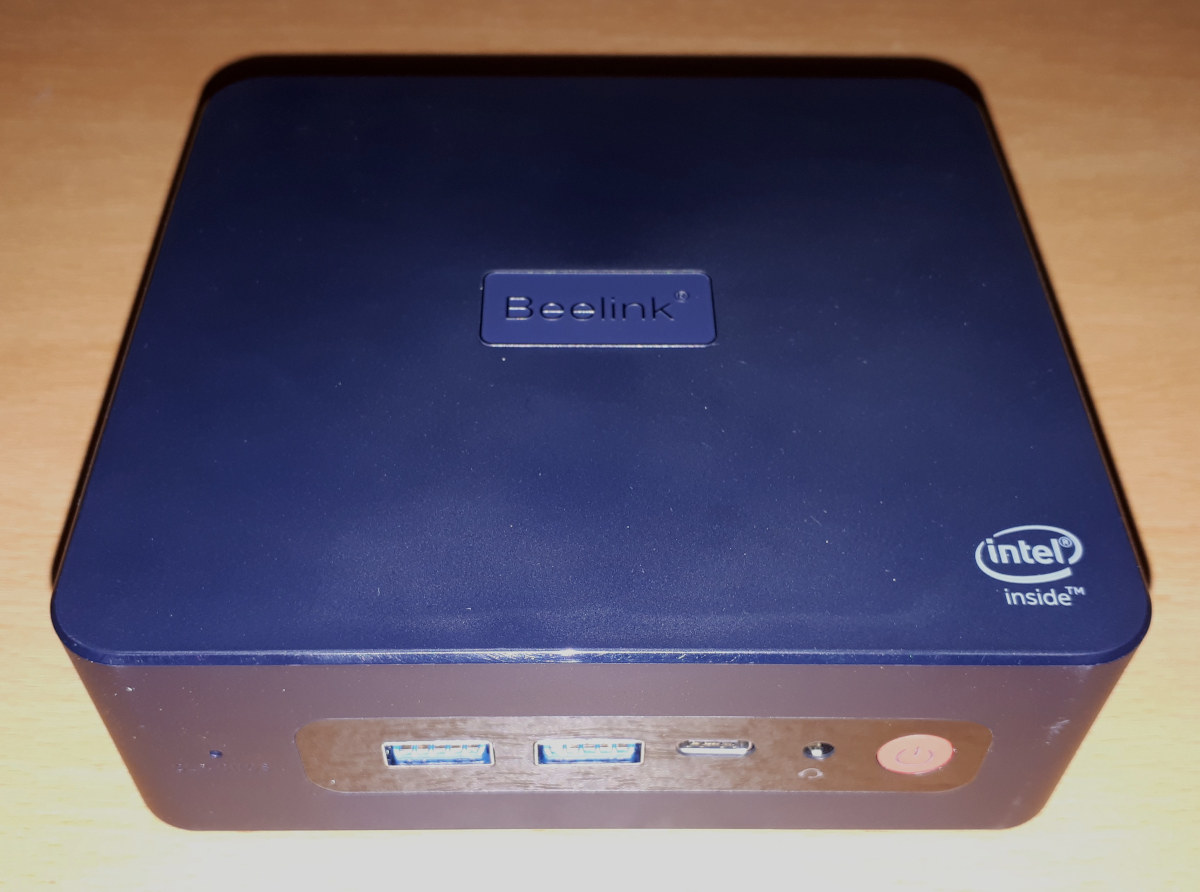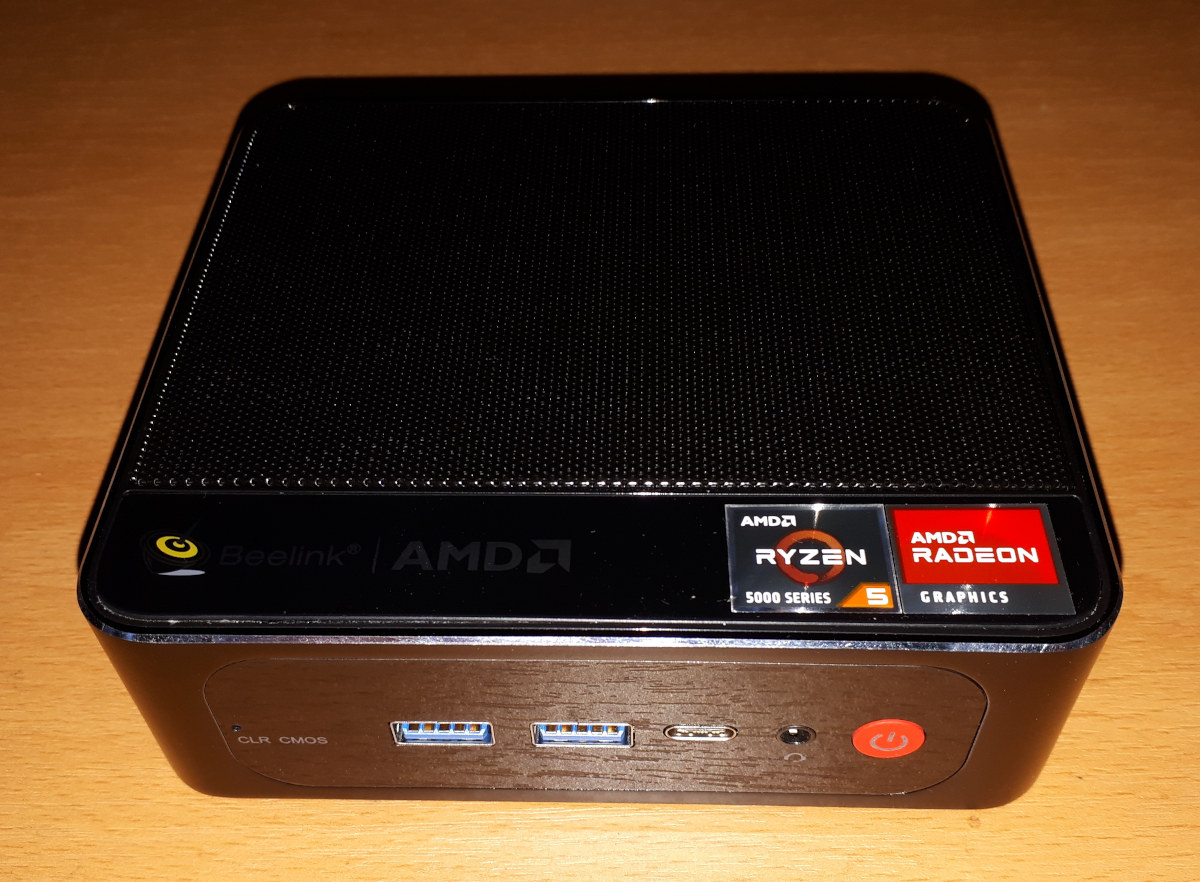We’ve had a sample of the Khadas Edge2 single board computer powered by Rockchip RK3588S octa-core Cortex-A76/A55 processor for a couple of weeks, and now that the board is officially launched we can post our review of the board with Ubuntu 22.04, and we’ll check out Android 12 later on. Khadas Edge2 Pro accessories The Khadas Edge2 comes in two variants: Basic and Pro, We received the Edge2 Pro SBC with 16GB RAM and 64GB flash that ships with two WiFi antennas by default, but the company also sent a low-profile fansink and thermal pad for cooling that in theory would be optional, but in practice, it is required as while the board runs fairly cool considering the performance it brings, it still needs a heatsink to prevent overheating and throttling. The fan may not really be necessary though as we’ll see below. I’d recommend installing the antennas before the […]
MeLE Quieter HD3Q Review – A fanless mini PC with dual-channel memory, 2.5-inch SATA bay
MeLE has launched a new range of passive mini PCs known as the ‘Quieter HD Series’ and first in the lineup is the Quieter HD3Q. Not only does this new mini PC address the main criticism of their earlier models by now including dual-channel memory, but it is also slightly larger allowing the ability to add a 2.5” SATA drive, and also has a higher power limit to improve performance. MeLE kindly sent one for review and I’ve looked at performance running both Windows and Ubuntu. MeLE Quieter HD3Q hardware overview The MeLE Quieter HD3Q consists of a 150 x 105 x 37mm (5.91 x 4.13 x 1.46 inches) rectangular plastic case with a metal base plate. Gone are the faux heat spreader fins from the top of the case as it is now finished with a very fine dimple effect. As a passively cooled mini PC, it uses Intel’s […]
Beelink SEi11 Pro Review – An Intel Core i5-11320H mini PC tested with Windows 11, Ubuntu 22.04
The latest mini PC marketed in the ‘Pro’ range from Beelink is the SEi11 Pro and features one of last year’s Intel H-series processors typically used in gaming laptops. Beelink kindly sent one for review and I’ve looked at performance running both Windows 11 and Ubuntu 22.04. Beelink SEi11 Pro hardware overview The Beelink SEi11 Pro physically consists of a 126 x 113 x 40mm (4.96 x 4.45 x 1.57 inches) square metal case. As an actively cooled mini PC, it uses Intel’s ‘10 nm SuperFin’ Tiger Lake processor and the review model included an i5-11320H which is a quad-core 8-thread 3.20 GHz Core processor (at 35W TDP) boosting to 4.50 GHz with Intel’s Iris Xe Graphics. The front panel has an illuminated power button, a 3.5mm headphone jack, a data-only Type-C USB 3.1 port, dual USB 3.1 ports and a reset pin-hole ‘CLR CMOS’. The rear panel includes a […]
Trigkey Speed S3 review – Part 2: AMD Ryzen 5 3550H mini PC tested with Windows 11 Pro
After checking out Trigkey Speed S3 mini PC hardware in the first part of the review, it’s now time to power up Trigkey Speed S3 Mini PC and test it with the preinstalled Windows 11 Pro operating systems. Booting up is fast, and the system runs smoothly while visiting various websites while listening to music, and watching YouTube videos. But in this second part of the review, let’s test the performance of the Trigkey Speed S3 mini PC on Windows 11 Pro in detail. Trigkey Speed S3 memory We can see the two 8GB Crucial memory sticks detected in Windows 11 Pro with a 2,400 MHz speed, while the sticks are rated up to 3,200 MHz. But a quick check on AMD’s website reveals this may be normal since the maximum memory frequency for the AMD Ryzen 5 3550H is listed as 2,400 MHz. Checking out the USB ports Since […]
MeLE Quieter3C fanless mini PC review with Ubuntu 22.04, Windows 11
MeLE’s newly launched Quieter3C is an update to their earlier Quieter3Q product which replaces one of the Type-A USB ports with a Type-C USB port and includes both power delivery and video display output, together with changing one of the HDMI ports to a mini DisplayPort. MeLE kindly sent one for review and given these are the only differences I’m only going to take a cursory look at performance benchmarks together with looking at these new features. MeLE Quieter3C hardware overview The MeLE Quieter3C is physically the same size as the Quieter3Q and consists of a 131 x 81 x 18.3mm (5.16 x 3.19 x 0.72 inches) rectangular plastic case with a metal base plate. The top half of the case has the characteristic fine grooves that mimic the fins of a heat spreader and is made of plastic rather than metal to allow reception to the WiFi antennas as […]
BMAX B3 Plus Review – An Intel Celeron N5095 mini PC with two Gigabit Ethernet ports
BMAX have relaunched their B3 Plus mini PC, aka MaxMini B3 Plus, with an upgraded Intel Celeron N5095 processor and a more distinctive design by having a novel way of accessing both the internal storage and memory together with being very lightweight in construction. BMAX kindly sent one for review and given the B3 Plus is similar to other mini PCs I’ve tested, I’m only going to take a cursory look at performance benchmarks and only whilst running Windows together with looking at the key features of this particular device. BMAX B3 Plus hardware overview The BMAX B3 Plus physically consists of a 125 x 112 x 44mm (4.92 x 4.41 x 1.73 inches) square plastic case. As an actively cooled mini PC, it uses Intel’s new 10 nm Jasper Lake N5095 processor which is a quad-core 4-thread 2.00 GHz Celeron processor boosting to 2.90 GHz with Intel’s UHD Graphics. […]
Beelink U59 Pro review – A Jasper Lake mini PC with faster GPU performance
Beelink’s newly launched U59 Pro addresses the weak graphical performance offered by the original Beelink U59, which we also noticed in the Beelink MINI S, and was a direct result of the iGPU limitations. By simply upgrading the CPU from a ‘desktop’ to ‘mobile’ Celeron processor the iGPU received a fifty percent boost in execution units. Beelink kindly sent one for review and I’ve looked at performance running both Windows and Ubuntu. Beelink U59 Pro Hardware Overview The Beelink U59 Pro physically consists of a 124 x 113 x 42mm (4.88 x 4.45 x 1.65 inches) square plastic case. As before it is an actively cooled mini PC but now uses Intel’s 10 nm Jasper Lake N5105 processor which is the same quad-core 4-thread 2.00 GHz Celeron processor boosting to 2.90 GHz but with improved Intel’s UHD Graphics as the ‘Graphics Burst Frequency’ increases from 750 MHz to 800 MHz […]
Beelink SER5 Review – An AMD Ryzen 5 5600H mini PC tested with Windows 11, Ubuntu 22.04
New to arrive in the Beelink SER lineup is the SER5 marketed as a ‘SER PRO’ and features one of last year’s AMD Ryzen 5000 H-series processors typically used in high-performance productivity and gaming laptops. Beelink kindly sent one for review and I’ve looked at performance running both Windows 11 and Ubuntu 22.04. Beelink SER5 Hardware Overview The Beelink SER5 physically consists of a 126 x 113 x 42mm (4.96 x 4.45 x 1.65 inches) square metal case. As an actively cooled mini PC, it uses AMD’s 7 nm Zen 3 Ryzen 5 5600H Cezanne processor which is a six-core 12-thread 3.3 GHz mobile processor boosting to 4.2 GHz with Radeon Graphics. The front panel has an illuminated power button, a 3.5mm headphone jack, a Type-C USB 3.1 port with Alternate Mode, dual USB 3.1 ports, and a reset pin-hole ‘CLR CMOS’. The rear panel includes a gigabit Ethernet port, […]


